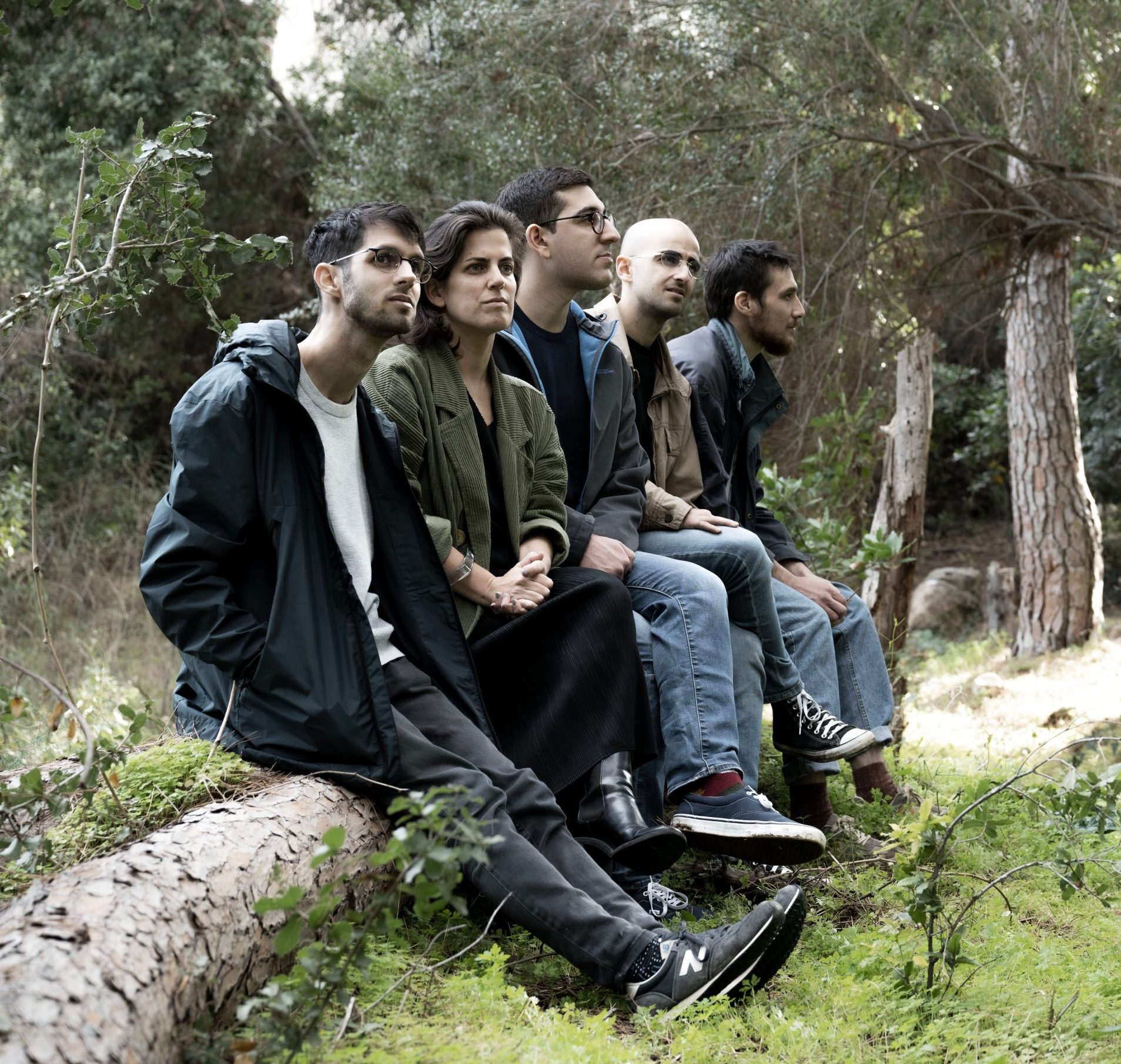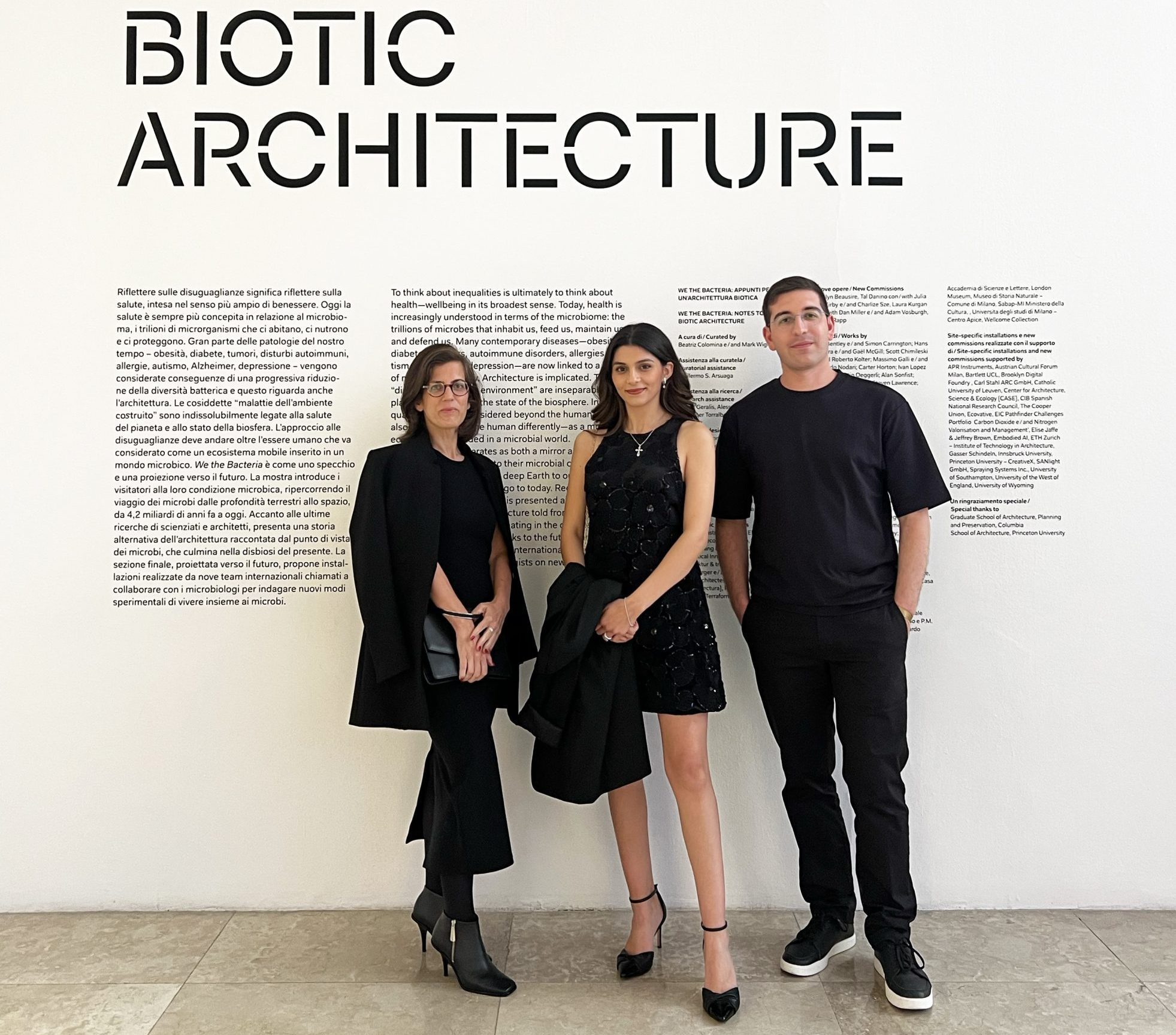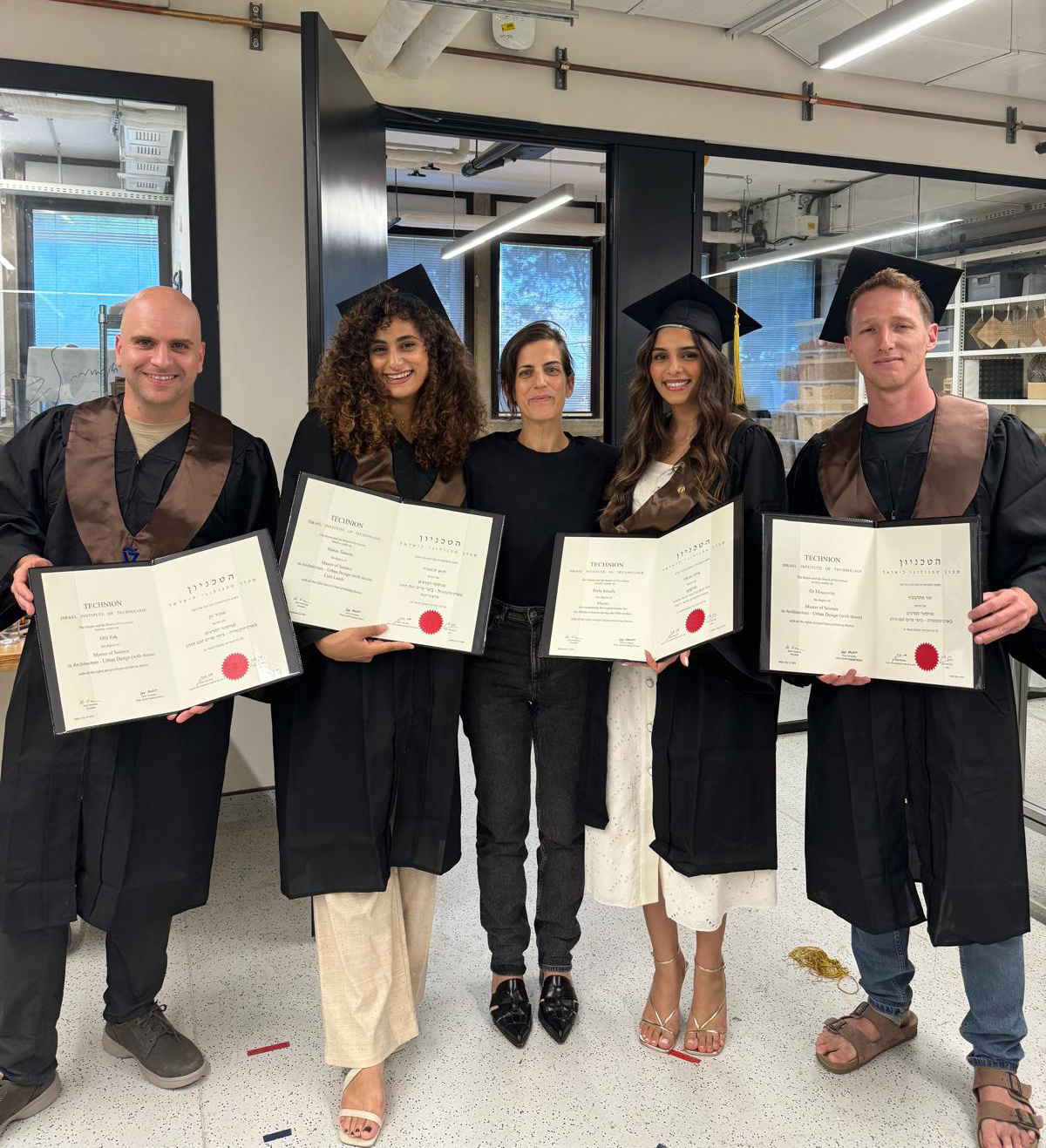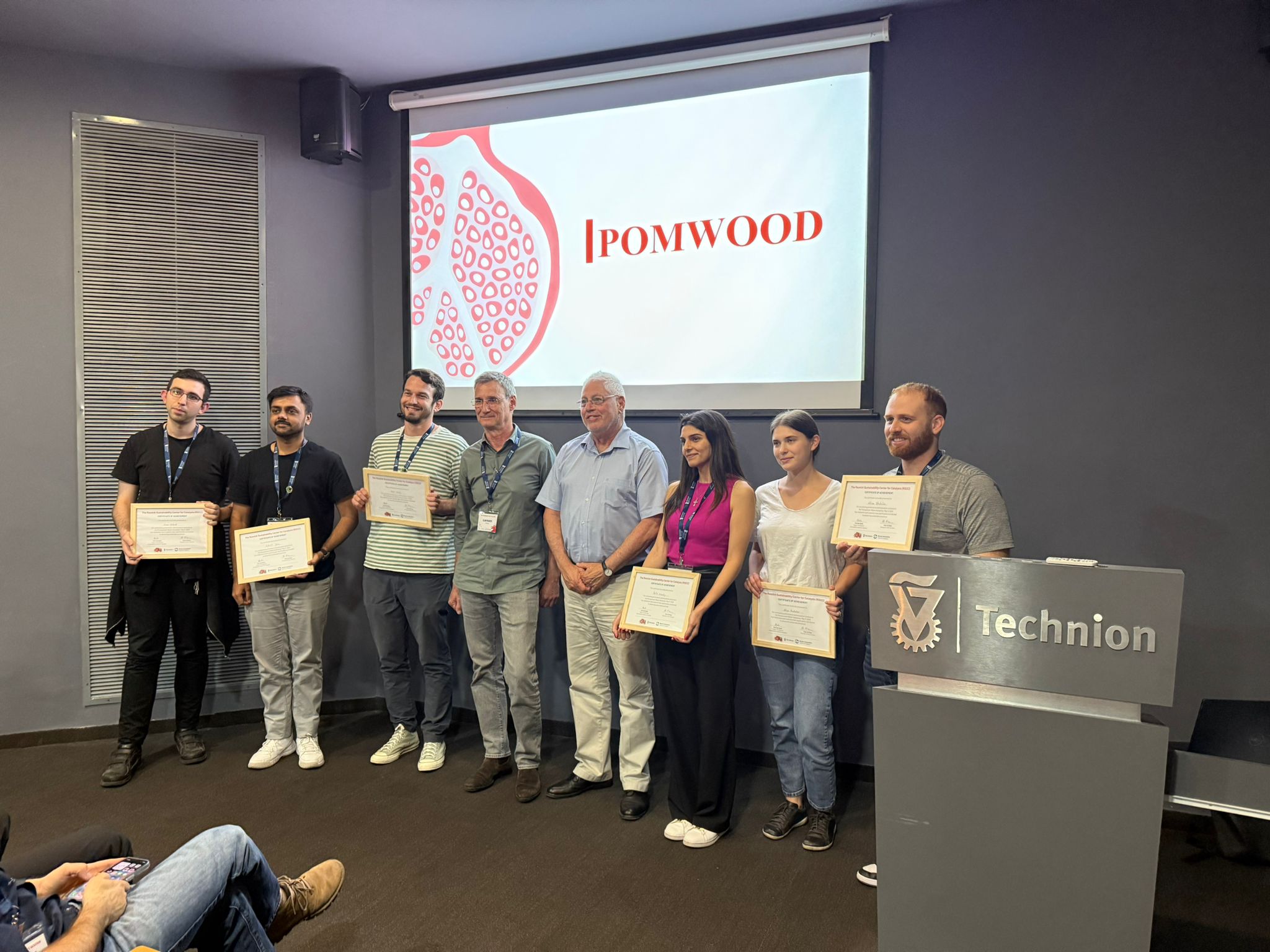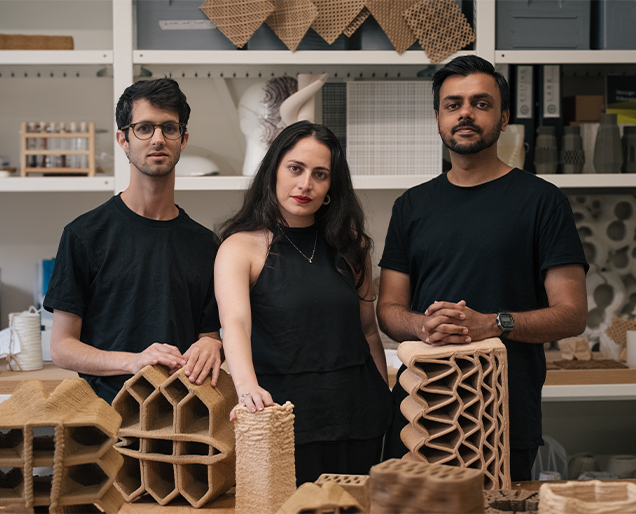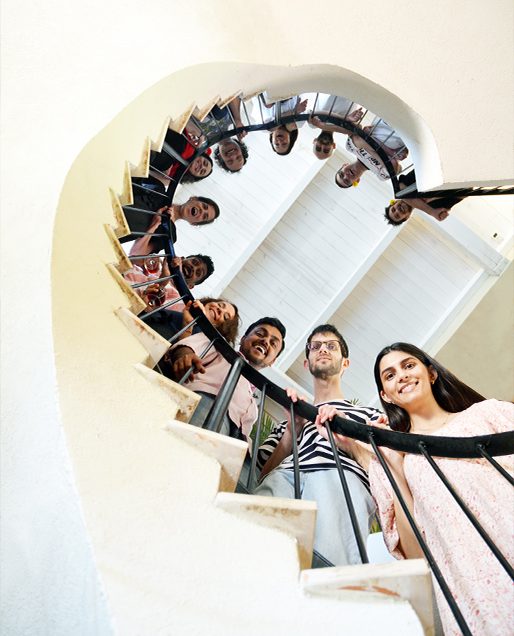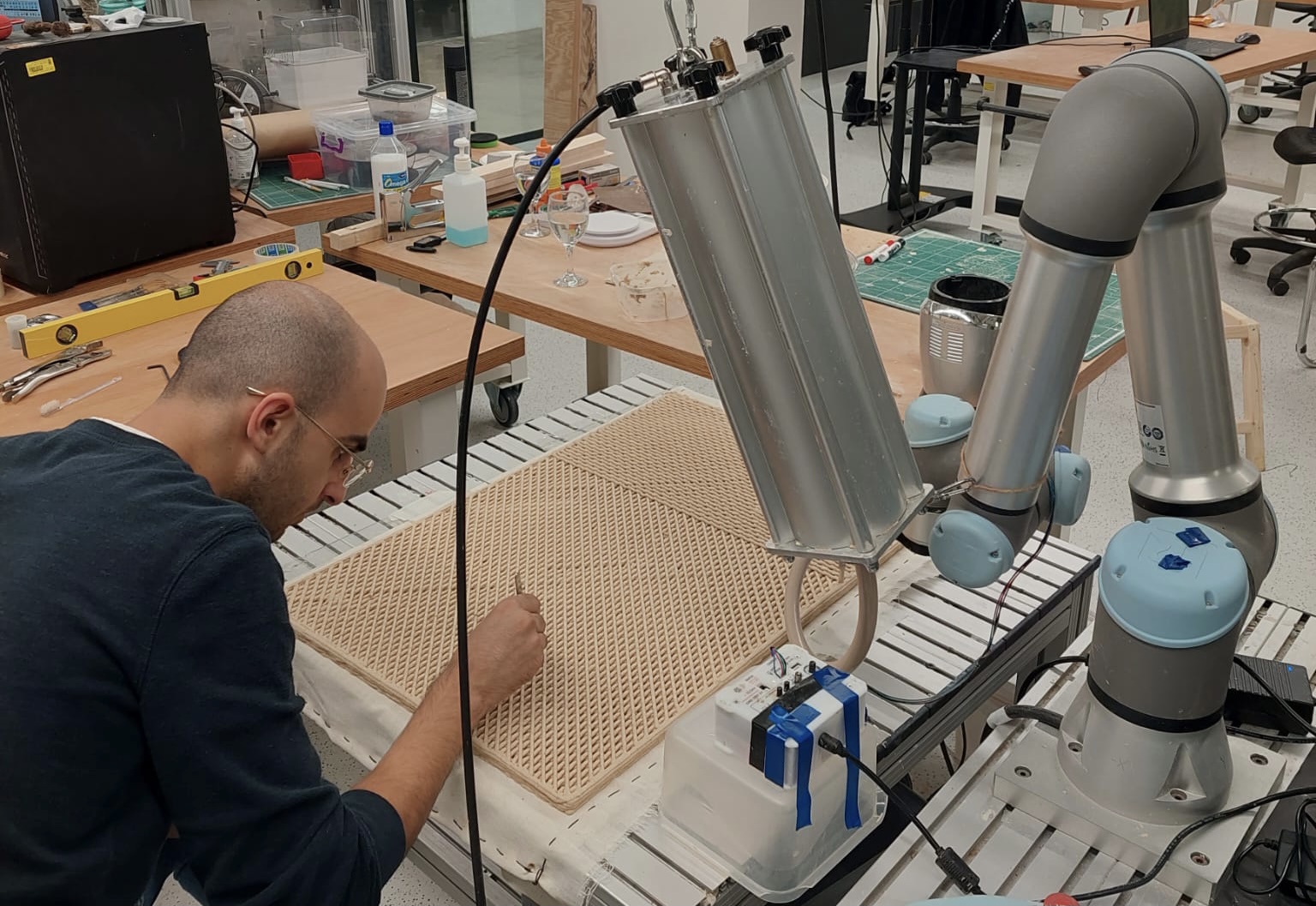D.DLab is a design-led technological research group positioning architectural design as a driving force in addressing one of the most critical global challenges of our time, the climate crisis, within the context of the built environment. The architecture, engineering, and construction industries account for approximately 40% of global CO₂ emissions, 30% of global waste, and 50% of raw resource consumption. Beyond their material impact, these sectors also contribute to biodiversity loss, directly affecting human health and well-being. At D.DLab, we respond to these urgencies through three interconnected design-for-sustainability trajectories, each generating new knowledge for architectural practice:
Biodesign in Architecture
We explore how living organisms can be integrated into the very processes of architectural design and fabrication, cultivating multiscalar relationships between biology and architecture that enable environmental adaptation, carbon fixation, reduced energy use, and deep contextual responsiveness.
Material Driven Design for Additive Manufacturing
We embrace the performative potential of bio-based and waste-derived materials, harnessing the formal freedom of 3D printing to rethink architectural tectonics and awaken new tactile languages.
Human and Non-Human Perspectives in Design
We develop design approaches that center both human and non-human perspectives, creating computational design and prototyping tools that support multi-stakeholder and multi-species modes of authorship.
